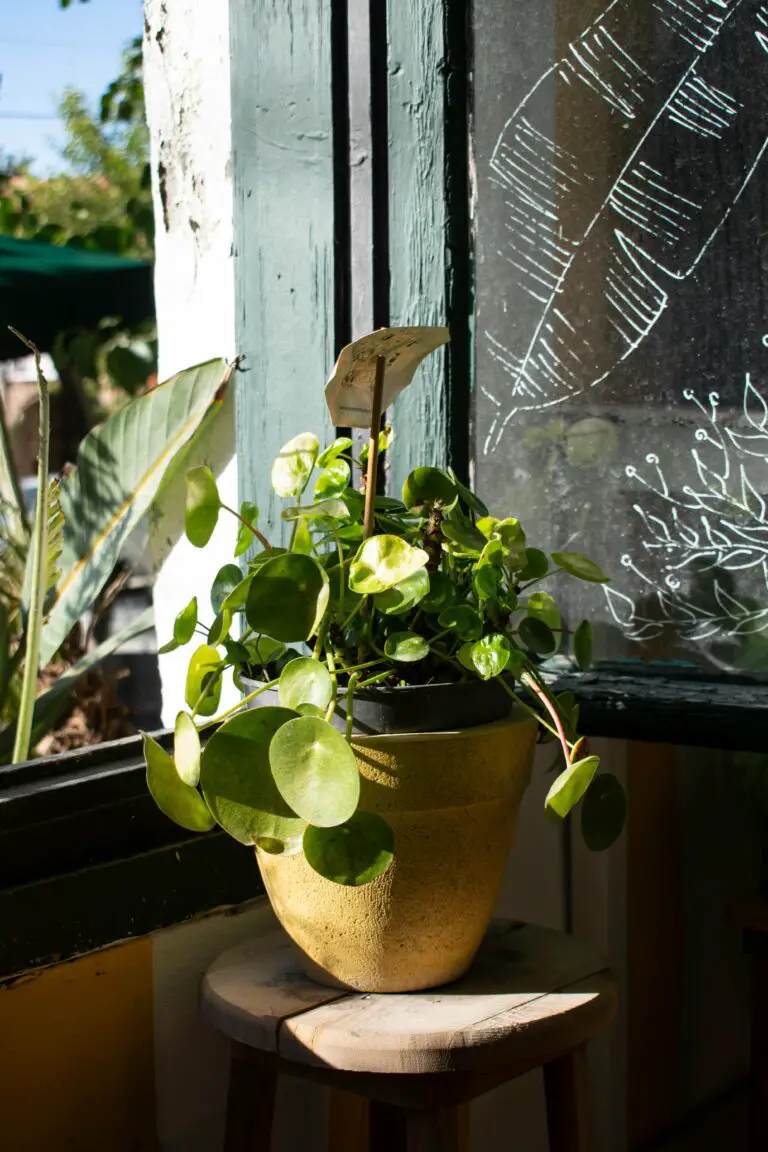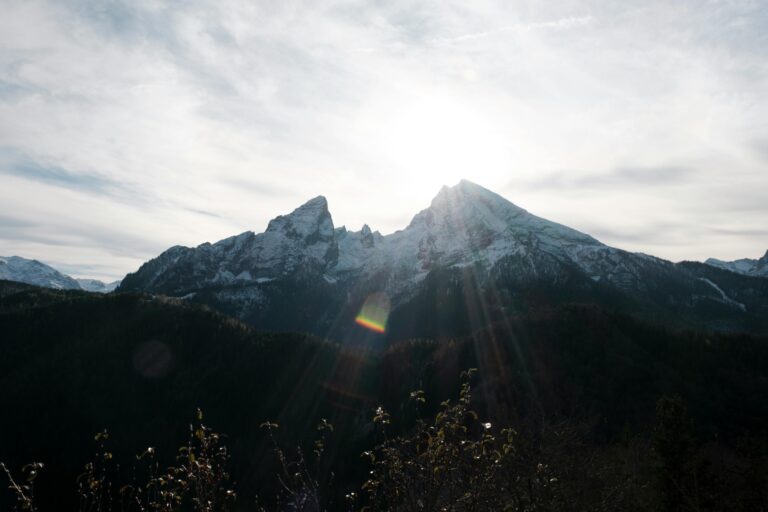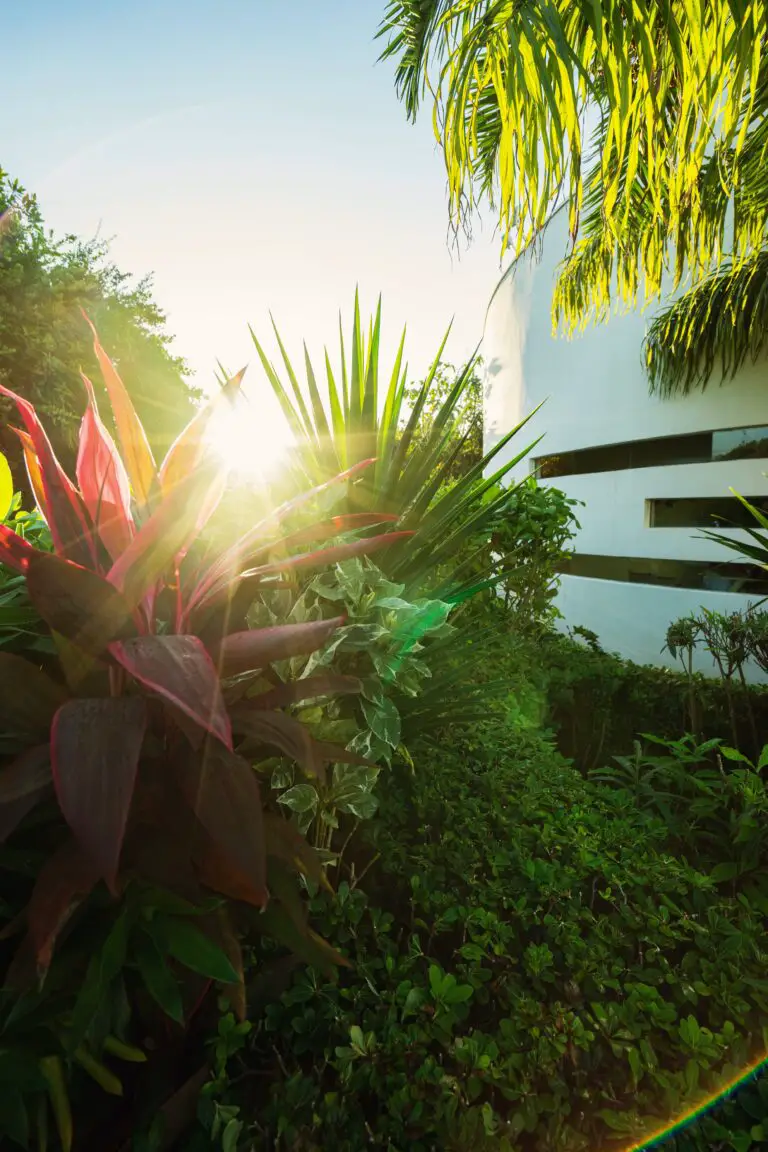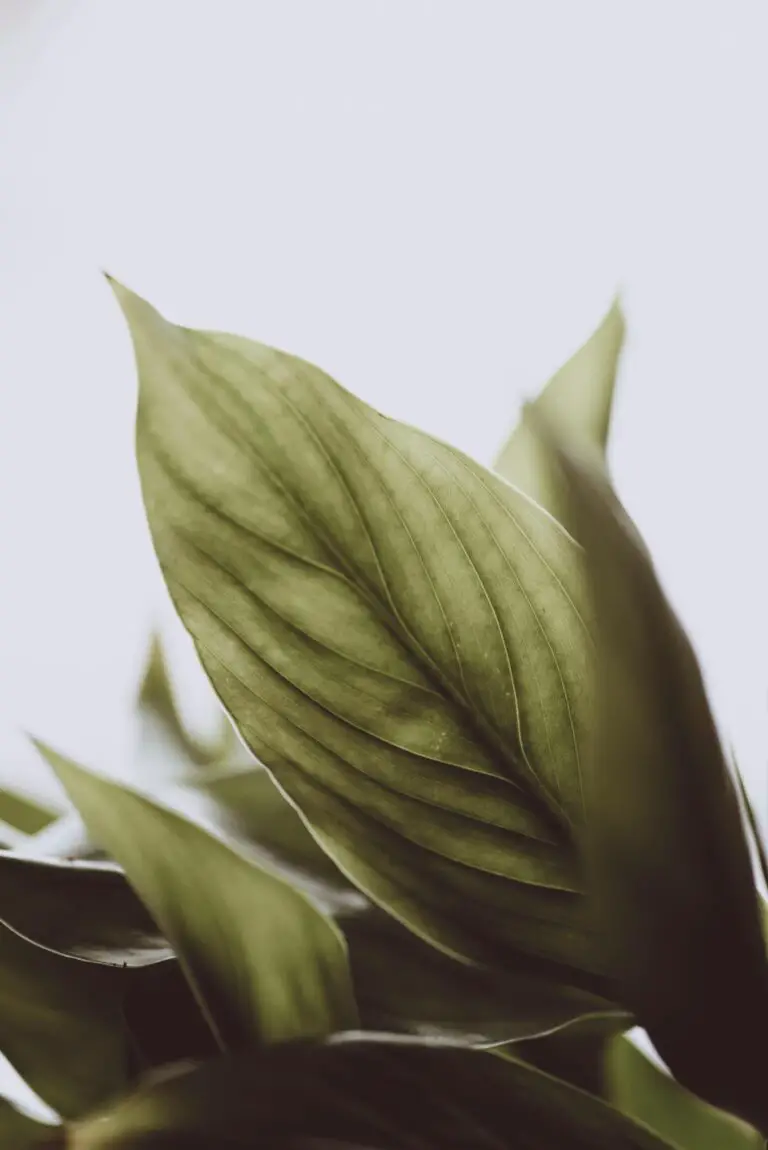Introduction to Sedum Plants
Known by many as stonecrop, sedum plants are a spectacular symphony of hardy and vibrant succulents. They sweep the landscape with an array of forms—tall, short, ground-hugging, and trailing—splashed in colors from serene greens to fiery reds. Sedum’s hardy nature isn’t its only claim to fame; let’s shine a light on why these resilient charmers should soak up just the right amount of sunrays.
Imagine a plant basking in the golden glow of daylight—it’s not just a scene of serenity but a crucial tableau for survival. Sedum plants and proper sunlight are an inseparable duo, much like paint and canvas to an artist. Sunlight is their lifeblood, converting carbon dioxide and water into sustenance through photosynthesis. But it’s not a mere ‘eat to live’ scenario; sedum in its ideal solar embrace flourishes to exhibit the full grandeur of its foliage and blossoms.
Draping rock gardens, crowning green roofs, or jazzing up containers, sedums can make a verdant statement, provided they get the spotlight they deserve. Take ‘Autumn Joy,’ a sedum variety that, under adequate sun, stages a dramatic transformation from brooding green buds to a carnival of pinkish blooms, enchanting butterflies and garden admirers alike. Their sunlight needs also make them a choice ally for gardeners tackling those sunny spots where other plants might shy away.
Sunlight: Sedum’s Non-Negotiable Companion
No garden anecdotes or planting tales sidestep the theme of sunlight because, for sedum, this celestial source is a non-negotiable companion. Neglecting their solar cravings can lead to a series of botanical woes—leggy stems, sparse blooms, or faded leaves, a far cry from their potential tapestry of colors and textures. Just envision the difference between a sun-kissed sedum and one lurking in the shade; the former is a portrait of horticultural vigor, while the latter could evoke a botanical blunder.
To embark on a journey of growing these sun-loving plants, one must think like a sedum—relishing each ray, seeking spaces where the sun generously spills. It’s not just about survival; it’s about embracing the light for a lush leap into their prime. Wondering just how much radiance rolls the right way for sedum? Dive into this enlightening guide on maximizing sedum’s verdant vibrancy.
To foster a deeper understanding, let’s turn to a visual aid—I present to you a video brimming with sunshine wisdom for our cherished sedums:
Understanding Sedum’s Sun Preferences
Like a sunbather soaking up the warmth on a golden beach, sedum plants relish the light’s caress. But why, you might wonder? It all boils down to the magic of photosynthesis – the process that lets these hardy little succulents convert sunlight into sugars. Here’s the scoop: their thick, fleshy leaves are sun-seeking sponges, tailor-made to capture every drop of sunlight. In the right conditions, they turn it into the energy they need to flourish.
While sedum can indeed play nice with a bit of shade, they pull off a remarkable performance under the spotlight of full sun. Picture this – a sedum burst into a spectrum of color, its blossoms reaching for the sky as though applauding the sun’s brilliant performance. This isn’t just plant bliss; it’s a well-orchestrated process that allows the plant to stockpile resources, ensuring resilience and a show-stopping floral display.
What’s fascinating is how these sun-lovers adjust to the light. Sedum doesn’t just enjoy a casual fling with the sun; they are built for endurance. In harsh, midday sun, sedum can amp up their internal sunscreen, maintaining their cool when others would wilt. Think of them as the camels of the plant world, storing crucial moisture in their leaves, making the most out of every sunbeam while remaining splendidly low-maintenance.
As gardeners revel in the joys of cultivating these vibrant beauties, achieving that ideal sun-kissed state is a breeze. Whether popping up in rock gardens or rooftop sedum sanctuary, full sun encourages robust growth and enhances their distinctive coloration. If you’re eager to learn more about nurturing these versatile plants, be sure to explore our guide on growing sedum in containers, uncovering potting secrets for the ultimate sedum spectacle.

The Ideal Sun Exposure for Sedum Growth
Ever wonder how much sun your sedum truly craves? Let’s shine some light on the matter! First off, sedums are the sun-worshippers of the plant world—they thrive with a good dose of daily sunlight. But how much is just right? Ideally, these hardy succulents love to bask in the sun for at least 6 hours each day. That’s the sweet spot where they flaunt their full spectrum of colors and robust health. Even though they’re lovers of sunshine, sedums are quite adaptable and won’t throw a tantrum if they get a bit less; partial sun often suffices for a slightly less ebullient display.
But hold on, what about the heat of the midday sun—too intense, right? Surprisingly, sedums handle it like pros. Full sun encourages them to develop stronger root systems and more vibrant blossoms. And let’s not forget the sun’s role in leaf intensification where colors can shift from cool to warm hues, as lively as a sunset’s palette. This phenomenon often leaves onlookers mesmerized by their kaleidoscopic transformation throughout the day!
Let’s consider light’s lesser-known artistry. The intensity of light plays a part too. In regions with harsher sun, like a rooftop garden in July, sedums can still thrive but may demand a slight afternoon shade siesta to dodge any potential sunburn. On the other side of the spectrum, in cooler climes, these resilient beauties can handle the full onslaught of the sun without missing a beat—it’s all about finding your sweet spot!
For those sedum enthusiasts who are charting out garden designs or simply crave to know more, don’t hesitate to dive into our detailed guide, “Sedum Sunsparkler’s Lush Palette: Thriving in the Bright Outdoors”, where you’ll uncover a treasure trove of tips and nuggets of wisdom for nurturing your succulents!
Remember, whether your sedums are lounging in the dappled light by a maple or commanding unfiltered attention in a south-facing garden, these spirited succulents know how to make the most of their sunny abode. So, give them that splash of sunlight they yearn for and watch your sedums overflow with joy and jazzy vigor!
Variations Among Sedum Species
The world of sedum – those resilient, diverse wonders of the succulent kingdom – offers a palette of sun-soaked colors and textures that can thrive in a variety of light conditions. But when it comes to sun requirements, not all sedum are created equal. Some are sun worshipers, stretching eagerly towards the sky, while others prefer the gentler kiss of partial shade. Let’s explore how these sun preferences vary across different sedum species and how you, the savvy gardener, can select the ideal sedum for your slice of heaven on earth.

Take, for instance, the vibrant ‘Autumn Joy’ sedum – it’s like the beachgoer of the plant world, living for the full, unfiltered rays of the sun. Planting ‘Autumn Joy’ in a spot where it can bask in sunlight all day is like giving it a one-way ticket to its happy place. On the flip side, we have varieties like Sedum spathulifolium, which under the harsh midday sun might feel like wearing a wool coat in summer – uncomfortable! This species revels in the reprieve of partial shade, especially in hotter climates.
Now imagine the sedum tapestry in Seattle versus the Sonoran Desert. The emerald star sedum, flourishing in the cool, maritime sunlight of the Pacific Northwest, may struggle under the intense glare of the Arizona sun. It’s about matching the plant’s needs with the climate’s offerings. Gardeners in areas with relentless sun might look to the sturdy Sedum reflexum, unfazed by the scorching rays, while those in cooler, cloudier regions can turn to the shade-tolerant Sedum ternatum.
Choosing the right sedum is like building a dream team – you have to consider the position of each player. Will the elegant Sedum telephium ‘Matrona’ rise to the occasion in your garden’s light conditions, or will the steadfast Sedum acre provide the groundcover gold you’re seeking? By understanding these nuances, you set the stage for a spectacular performance that harmonizes with the sun’s movements through your garden’s sky.
Seasonal Sun Considerations for Sedum
Sedum, those hardy succulent beauties, bask in the glory of the sun, drinking in its rays like fine connoisseurs of light. Yet, their solar penchant varies with the seasonal symphony, playing a different tune as the Earth waltzes around the Sun. Let’s peel the curtain on this botanical dance and reveal how garden aficionados can orchestrate perfect harmony between sedum and the changing sun.
Spring Awakening: A Slow Sun Salutation
As the snow whispers its goodbye and spring timidly takes the stage, sedum plants stretch out of their winter slumber. Mild, yet longer days grant a gentler sun. This season plants the seeds for robust growth, urging gardeners to introduce sedum to the increasing daylight progressively — like a soft prelude before a crescendo.
Summer’s High Noon: A Radiant Rhapsody
Come summertime, the sun reigns supreme, conducting a powerful orchestra of light. Sedum, thriving in the limelight, embraces this season with zeal. However, in regions where the sun blazes a scorching trail across the sky, gardeners may need to play a shade symphony, using light fabrics or plant companions to filter the harshness, safeguarding their verdant virtuosos from a midday melody that’s too intense.
Autumn’s Gentle Golden Hour
When the autumnal equinox heralds shorter, cooler days, sedum’s sun-soaked leaves glisten with a dew-kissed glow. The sun, now a gentle maestro, still demands an audience with the sedum, but with the soft touch of an impressionist painter. This is the time to let them bask uninhibited, soaking up every last drop of warmth before winter sets the stage.
Throughout the seasonal flux, sedum’s sun needs may ebb and flow. Observing these patterns, gardeners choreograph care, ensuring their sedum ensemble hits all the right notes. It’s a yearlong performance that, when tended with wisdom, can transform a humble patch of green into a crescendo of life and color.

Challenges of Too Much or Too Little Sun
Sedums are sun worshippers, basking in its golden rays to flourish and spread their succulent cheer. But as with anything in life, balance is key. A sedum soaking up the sun is the picture of plant perfection, but what happens when it’s a case of too much of a good thing, or not enough? Let’s dig into the sunny and shady sides of sedum sunlight needs.
Picture this: a sedum plant in the midday sun, leaves vibrant and plump. But let’s fast forward a few scorching days. Those once perky leaves start to show signs of stress—they’re sunburned! Yes, plants can get sunburned too. It’s a sad sight, with discolored, damaged patches that scream ‘too much sun!’. Don’t fret; you can shield your sedum with a sun parasol (a.k.a. some shade cloth or strategic planting) to prevent this solar scorching.

But let’s not forget the flip side—too little sun. Picture a sedum stretching its stalks, yearning for the sun’s embrace. This act of ‘reaching’ is known as etiolation, and it’s the plant’s dramatic way of telling you it’s starved for sunlight. The consequences? Leggy, weak growth that’s far from the robust sedum charm you’re after. The solution is simple though—just dance your plant into a sunnier spot, a little like musical chairs, only with more photosynthesis involved.
Every sedum has its sunny sweet spot. It might take a bit of trial and error, but with attention to the whispers (or shouts) of your plant, you’ll find that perfect patch of paradise where your sedum can truly thrive. Keep an eye out for telltale signs and be ready to play sun matchmaker, ensuring your succulents get just the right amount of light’s embrace.
Best Practices for Sunlight Management
Embracing the sun’s rays is a dance of balance for sedum plants. These hardy succulents are sun-worshippers, thriving in the warm embrace of direct light. Yet, striking the right amount of solar exposure can be the difference between a vibrant, flourishing sedum and one that’s merely surviving. Let’s dive into some practical tips to ensure your sedums are basking in just the right amount of sunlight.
First up, if you’re in a particularly hot climate, or the summer sun is more intense than a dragon’s breath, consider using shading as your plant’s personal sunhat. Lightweight, breathable cloth can provide a reprieve during the harshest hours. Take it from a fellow gardener who watched their sedums swelter—around 11 AM to 3 PM, a gentle shade can mean a world of difference.

Think tactically when planting your sedums. Positioning them amongst taller plants or on the east-facing slope of a garden can shield them from the afternoon’s full force. It’s like chess, and your sedum is the king to be protected. A friend did just this, nestling their sedums among lavender and watched them thrive in the dappled light.
Lastly, let’s talk about reflections—no, not the philosophical kind, but the use of reflective surfaces to direct sunlight. Strategic placement of mirrors or white stones around your sedums can redistribute light in your garden’s shadier areas, giving them a well-rounded tan. One innovative gardener transformed their dim corner into a sedum paradise with nothing but a few mirrors from a yard sale.
There we have it—shading, thoughtful planting, and reflective tactics. With these insights, your sedums won’t just survive; they’ll thrive under the sun’s golden spotlight. And remember, it’s all about balance. Too much sun can lead to a sunburned sedum, but just enough will have them singing in the light!
Common Misconceptions About Sedum and Sun
In the vibrant world of succulents, sedum plants hold a special fame for their sun-basking prowess. However, there’s a shimmer of misinformation floating around these resilient beauties. So, let’s clear the air with a sunbeam of truth and get down to what sedum really needs from that great star in the sky.
One popular belief that needs sunburn therapy is the myth that sedum can endure scorching sunlight all day without consequence. While it’s true that many species of sedum are sun-lovers, they aren’t invincible to the golden glares of mid-day. Imagine wearing a fur coat to the beach – not exactly comfortable, right? Similarly, sedums, with their fleshy, moisture-rich leaves, can experience sunburn if exposed to too much direct sunlight, especially in the peak summer months.

Another slice of sun-soaked fiction suggests that all sedum varieties have an insatiable thirst for bright light. Let’s debunk that: sedums are diverse. There are types that flourish in partial shade, and they would quite relish a respite from the relentless rays. It’s much like us humans; some of us can spend hours in the sun, while others are searching for the next shady retreat.
Ever heard that all sedum can be lumped together when it comes to sun requirements? Here’s where botanical wisdom shines through. A sedum thriving on a rocky alpine slope gets a different light menu than one nestled in lowland meadows. It’s not just about how much sun they get, but also the quality of light. Our photosynthesizing friends need to be matched with their ideal sunbathing scenarios, not a one-size-fits-all solar dose.
Now, grab your gardening hat and a pinch of curiosity, because it’s essential to understand the specific needs of your sedum variety. Research, observation, and perhaps a chat with a local green-thumbed expert will lead you to a radiant garden success. And remember, when in doubt, aim for bright, indirect sunlight, and watch your sedums thrive in the embrace of just the right amount of sun.
Sedum Success Stories: Optimal Sunlight Cases
The beaming success of sedum plants is often a tale of sunlight symbiosis. These succulents are love letters to sunshine, with their vibrant fleshy foliage unfurling in full glory under the ideal solar caress. Let’s bask in some real-life narratives where sedum plants didn’t just survive, they thrived.
Imagine a rooftop in Brooklyn, transformed into a thriving urban oasis. Here, sedum blankets the space, their jade and ruby leaves soaking up the New York sun. This once barren terrace is now a lush, sprawling garden with sedums that flourish with minimal care, a testament to the plant’s love for ample sunlight.

Traveling to the sunny coasts of California, a vineyard employs sedum varieties between the grapevines. The sun-soaked sedums act as living mulch, conserving moisture and preventing erosion. Winemakers marvel at the dual success; grapes ripen to perfection above as sedums bask in their preferred solar embrace down below.
Across the ocean in the United Kingdom, a community garden narrates a story of sedum resilience. Despite the country’s unpredictable weather, a special blend of sedums creates a spectacle of solar-powered sustainability. The secret? Choosing varieties like Sedum telephium that relish both the full sun and dappled shade, proving adaptive strategies can lead to radiant results.
Each of these sunlit narratives not only showcases the sedum’s versatility and vigor but also the power of understanding and harnessing the natural predilections of our botanical companions. By pursuing the practices that match with sedum’s sunny desires, gardeners across the globe are writing success stories in the very leaves of these robust plants.
Frequently Asked Questions

Do sedum plants need full sun to thrive?
Ah, the sedum, nature’s sun worshipper! These hearty beauties are renowned for basking in the full glory of the sun’s rays. Imagine a Mediterranean coastline, the sedum standing proud and vibrant, soaking up that golden sunlight. That’s their ideal day out! A minimum of six hours of direct sun is what these succulent gems desire to showcase their full potential.
Can sedum survive in partial shade?
Gardeners with dappled sunlight, fear not! While sedum plants hold a ticket for the sun-soaked express, they can indeed compromise. Picture a lazy afternoon beneath a tree’s outstretched branches, where beams of sunlight play hide and seek. This is the sedum’s version of partial shade—and they’ll do just fine. However, do keep in mind that too much shade can make them stretch out, like a cat reaching for a warm spot on a chilly day.
What happens if my sedum gets too much shade?
Imagine a group of sunbathers suddenly under a beach umbrella that’s a tad too large—that’s your sedum in too much shade. They’ll yearn for the sun, stretching their stems out thin, trying to sneak a peek at the sky. This leggy growth is less than ideal; it’s like a plant’s way of saying, “I could use a bit more sunshine, please!”
How does the amount of sun affect the color of my sedum?
It’s a bit like a chameleon on a vivid canvas—the amount of sun your sedum gets can transform its colors. Sedum plants relish the light, and it’s what helps them don dramatic hues that can range from deep greens to fiery reds. Rob their sunlight, and you may find their colors as faded as old jeans. Give them plenty of rays, and watch them put on a dazzling color show!
Are there any sedum varieties that prefer less sun?
Contrary to the sun-seeking majority, some sedum varieties march to the beat of a different drummer. These are the ones that can handle a little more shade, preferring the cool side of the pillow, so to speak. Varieties like Sedum ternatum and Sedum sieboldii have adapted to flourish even when the sun plays coy. They’re like the introverts at the garden party, comfortable even in the quieter, less sunny corners.
Will too much direct sunlight harm my sedum?
“Sunburn” isn’t just for beach-goers; even sedum can have too much of a good thing. If your region is particularly hot, like a summer sidewalk that sizzles, your sedum may need a parasol of sorts. In extreme heat, provide some afternoon shade to help your sedum keep its cool. Remember, it’s about enjoying the sun responsibly!



